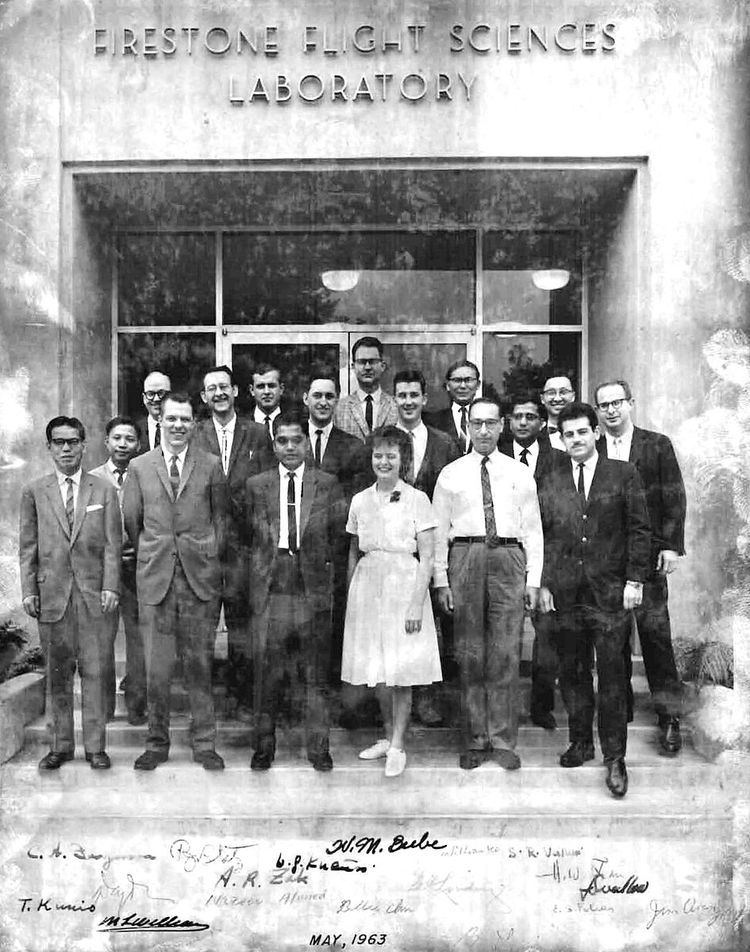Ethnicity Indian Name Nazeer (space Education Cornell University | Website Dr. Nazeer Ahmed Role Scientist | |
 | ||
Born 28 September 1939 (age 86) ( 1939-09-28 ) Tumkur, Karnataka Residence California, US and Bangalore, India Occupation Chairman & chief mentor of rankstudent.com Books What Makes Us Human?: A Spiritual Perspective, The Qur'An: An English Translation Similar Prasanta Chandra Mahalanobis, Venkatraman Radhakrishnan, Charusita Chakravarty | ||
Dr. Nazeer Ahmed is a scientist, inventor, historian, legislator and philanthropist.
Contents
Biography
Nazeer Ahmed was born in Tumkur in the princely state of Mysore, India in 1939 into a farming family. His father Abdul Azeem was a Sufi spiritual scholar of the Qadariya Order. He achieved the first rank to the state in the public examination of 1952 and won the Maharaja of Mysore gold medal. Because of the consistency with which he maintained his rank status in state level and interstate examinations, he is known in Karnataka as "Rank Nazeer".
In 1961 he proceeded to the California Institute of Technology as Institute Scholar and as a Tata Scholar. He obtained his MS and AeE degrees from Caltech. In 1964–65 he worked in Huntsville, Alabama on the Saturn, Apollo and Lunar Land Rover Projects at the Marshall Space Flight Center. In 1967 he obtained a PhD in Theoretical and Applied Mechanics from Cornell University. He studied management under Peter Drucker at New York University and obtained an MBA from Rider University, New Jersey. In 1977, he returned briefly to India and was elected a member of the Karnataka Legislative Assembly from the 57th constituency.
Dr. Nazeer Ahmed worked as project manager on the Hubble Space Telescope. He designed, assembled, tested and delivered diffraction-limited performance in its secondary mirror assembly. Between 1984 and 1997 he was program manager on several strategic and tactical programs. Dr. Nazeer Ahmed holds twelve US patents in advanced composites and space-based lasers. He was a chairman of the AIRAPT conference in high pressure physics in Denver, Colorado in 1977. He has published a large number of papers in scientific journals including Journal of Applied Physics, Journal of Applied Mechanics, Journal of Basic Engineering, Journal of the Acoustical Society of America and other publications.
Dr. Nazeer Ahmed has written extensively on Islamic history and culture (www.historyofislam.com). His two-volume study Islam in Global History was published in the United States and translated into Urdu. He is the author of an Encyclopedia of Islamic History (History of Islam) and a spiritual treatise "What Makes Us Human?". As of 2012 Dr. Nazeer Ahmed is the director of the American Institute of Islamic History and Culture in California and a senior advisor to the World Organization for Resource Development and Education in Washington, DC and to HMS Institute of Technology, India. He also serves on the Steering Committee of Elijah Institute, Jerusalem, Israel.
Dr. Nazeer Ahmed translated the Qur'an into American English; the translation was released by Maulana Rashdi of Jami Masjid Bangalore.
Dr. Nazeer Ahmed was elected a delegate to the Democratic National Convention, 42nd Congressional District in California in 1988. He was a candidate for US Congress, 46 CA Congressional District in 1992.
In India he set up a scholarship fund in the late 1990s called Rank Nazeer Foundation to support poor students.
In 2013 Dr. Ahmed was appointed a member of the Karnataka Knowledge Commission whose mandate is to transform Karnataka into a knowledge based state be it in agriculture, science, technology, arts, sports or traditional knowledge.
Positions
As of 2012
Education
Works
Professional and academic experience
Contribution to community
The unique Eidgah combines traditional Indian designs with subtle mathematics from space sciences.
When the people of Tumkur were experiencing hardship in burying their dead due to lack of space in the existing cemetery, Ahmed donated over 6 acres of land in the city in 2008, and designed and constructed an Eidgah, a Muslim prayer structure, on this land, facing Mecca, the direction in which Muslims pray. According to the inscription beside the Eidgah, this structure has the divine name "Allah" built into the structure and seen as a reflection, suggesting that the world is illusory and only a reflection of the heavens. Each of the smaller minarets is nineteen feet from the ground and the intermediate sized minarets are nineteen feet from the base. So, altogether there are six minarets that are nineteen feet each. The number nineteen is a mystical number in Islam; six times nineteen is 114, which is the total number of surahs in the Qur'an, the holy book of Islam. Straight lines drawn from the apex of the minarets intersect where the word "Hu" is inscribed in a red circle. The subtended angle of 112 degrees is twice the natural flow angle of the earth. This flow angle is a solution to a Legendre polynomial of the second order which was presented in a paper by Ahmed at the fourth National Congress of Applied Mechanics at Harvard University, Cambridge, Mass. in 1972. Huwa is the abstract divine pronoun for God, most exalted. The circle is a reminder of "two bows length or less" wrapped around Muhammed when he is said to have stood in the divine presence during Me'raj. The entire structure is enclosed in a "golden rectangle" such that the ratio of the width of the base to the height of the two large minarets is approximately 1.62. Ahmed also built mosques (1995) and a school in Tumkur, India in co-operation with the Peace Corps of the United States (1967).
